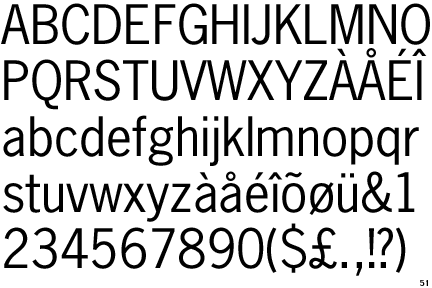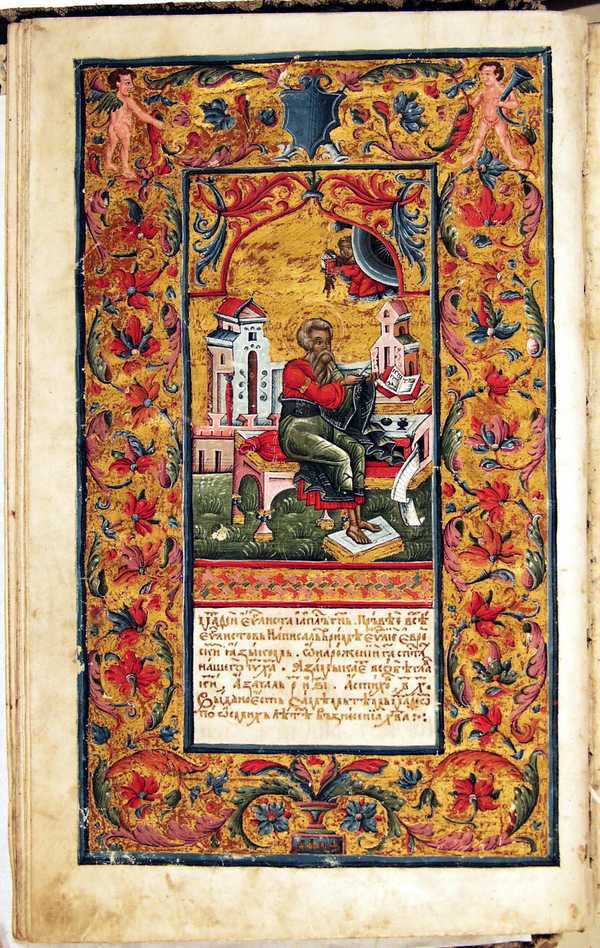I thought it would be wise to start at the beginning. Where did Gothic come from? What did it stand for? Who were the leading artists behind the movement?
Origins
Gothic is a very old form of art style, tracing it's routes back to as early as to the mid 12th century. It had evolved from the Romanesque art, the classical style the Romans brought with them into Europe. (Martindale, A. 1985)
(Martindale, A. 1985)
"The term Gothic was coined by classicizing Italian writers of the Renaissance, who attributed the invention (and what to them was the non-classical ugliness) of medieval architecture to the barbarian Gothic tribes that had destroyed the Roman Empire and its classical culture in the 5th century Ad."
"The term Gothic was coined by classicizing Italian writers of the Renaissance, who attributed the invention (and what to them was the non-classical ugliness) of medieval architecture to the barbarian Gothic tribes that had destroyed the Roman Empire and its classical culture in the 5th century Ad."
(Martindale, A. 1985)
Reception
Originally the term 'Gothic' was used in a derogatory stance. People saw the art style as "non classical ugliness" and it wasn't until the 19th century that it became accepted and even praised. (Martindale, A. 1985)
I find it interesting that for most of the time Gothic was seen as an ugly art style, and it is only fairly recently that it became accepted and even praised! I've always found Gothic architecture quite interesting; I enjoy how the functionality of the building is often also used as the decoration, for instance the ribbed vault which can often be seen supporting heavy stone ceilings:
(Manske, M. 2004)
However I can see how 'crittics' of the day might have thought of the style as ugly. In essence it is a purely technical solution with decoration mostly as an afterthought. The arched windows, flying buttress's and ribbed vaults are all designed as a solution to support the heavy weight of larger and larger structures whilst maximizing the amount of natural light. (Martindale, A. 1985) (Speedfacts. 2010).
Although crittics remained opposed to the style, many buildings (mostly cathedrals) were constructed in the Gothic style. Some of these were: "the catherderals of Sens (1140), Noyons (1150), Senlis (1151), Paris (1163) Laon (1165), and Chartres (1194)." (Antena Publications. 1996). It would be interesting to know if these buildings were happily constructed in the Gothic style or whether it was a forced choice to allow the building to be constructed at a grander scale.
Thinking about this 'form of construction' styling Gothic has reminds me of the Hyde Park building (or The Crystal Palace) originally constructed for The Great Exhibition of 1851. The reason for this is because The Crystal Palace was constructed from a modular design of glass and iron supports. This was also used though as the decoration - the idea being to show the world that we could create these grand structures in such a way previously not available (due to the low quality of refinery for materials, and hence weakness). It is very interesting that this occurred at the same time that A.W.Pugin and Charles Barry were reconstructing the Palace of Westminster in a Gothic style. (The Crystal Palace. 2007)
(Bhoeble. 2006)
There have been 3 distinguishable phases of Gothic architecture; Early, High and Late.
Early Gothic (1120 - 1200AD)
This is the era where the style of Gothic Architecture was compiled into what we know it as today. This combination of the Gothic elements took place around Paris, France from 1120 as the wealthy residents could afford to build large cathedrals in the Gothic style. One of the most famous buildings in the Gothic Architecture styling and even in the world was constructed around this time; The Notre-Dame de Paris (1163). During this time the Gothic style learn't and refined many of the practices and techniques and evolved to be capable of creating even grander structures. The grand and elaborate presence of the structures created helped to spread the Gothic style to other countries throughout Europe in the following years. (Martindale, A. 1985)
When the Gothic style spread to England it developed its own different characteristics from the French Gothic style. This early English Gothic style (1200-1300 AD) "had thicker, heavier walls... accentuated, repeated molding on the edges of interior arches; a sparing use of tall, slender, pointed lancet windows; and nave piers consisting of a central column". (Martindale, A. 1985)
Late Gothic (15th Century)
This is the era where the style of Gothic Architecture was compiled into what we know it as today. This combination of the Gothic elements took place around Paris, France from 1120 as the wealthy residents could afford to build large cathedrals in the Gothic style. One of the most famous buildings in the Gothic Architecture styling and even in the world was constructed around this time; The Notre-Dame de Paris (1163). During this time the Gothic style learn't and refined many of the practices and techniques and evolved to be capable of creating even grander structures. The grand and elaborate presence of the structures created helped to spread the Gothic style to other countries throughout Europe in the following years. (Martindale, A. 1985)
From my experience when I went to Paris a few years ago you can understand how people would be amazed by this architecture - it still impresses today! The Notre-Dame is defiantly one of my favorite buildings in Paris (along with La Grande Arche de La Defense). It is as impressive as it is inside as it is on the outside. Many people only think of the front of the church when you talk about The Notre-Dame, with the large circular indented windows on its spires and grand doorways. However, perhaps most surprising, I believe the rear of the church is much more impressive. You can see the many different flying buttresses that hold the structure together, the spires, large stain glass windows and archways. It's a masterpiece of 'over design' and delicately carved details are mixed perfectly with plain stone walls.
(Louis, P. 2006)
When the Gothic style spread to England it developed its own different characteristics from the French Gothic style. This early English Gothic style (1200-1300 AD) "had thicker, heavier walls... accentuated, repeated molding on the edges of interior arches; a sparing use of tall, slender, pointed lancet windows; and nave piers consisting of a central column". (Martindale, A. 1985)
It's interesting, although completely understandable, that as Gothic moved to different locations and cultures it was changed slightly to fit into its surrounding.
Late Gothic (15th Century)
I have decided to skip on to Late Gothic for a few reasons. I believe this will save time, especially because the High Gothic period is mostly the same, but also because I have a better interest in this late stage of Gothic.
In the time leading up to this Late Gothic stage, designs were slightly changed again as it spread throughout the world. These were condensed and compiled and became part of the Gothic design culture. From these combined cultural additions and changes the Renaissance style and hence era was born!
The Renaissance is seen as the end of Gothic style. The Renaissance style incorporated and encouraged many more classical features and designs. Seen as more 'god pleasing', the Renaissance style became preferred over Gothic, which became seen as barbaric. (Martindale, A. 1985)
Gothic in the Media
Gothic has been represented well in the past media. There are many websites that talk about the past history of gothic, and its links to the medevil period, such as www.medieval-life-and-times.info (Medieval Life and Times. 2006)
(Brandon, R. 2011)
Gothic architecture has been present in books throughout history. The example I've provided above is An Analysis of Gothic Architecture by Raphael and J. Arthur Brandon and was published in 1903. As the title of this book suggests it takes a look at how gothic architecture is formed, its styling and different examples. This is still a fairly recent example though of Gothic architecture represented in books. (Brandon, R. 2011).
(Mitsui, D. 2009)
Frankenstein
(Universal Pictures. 1931).
(Universal Pictures. 1931).
Gothic architecture has also very famously been represented in old horror films. Possibly the most famous of which would be Frankenstein (1931) with its famous, dark and creepy castle. The gothic architecture setting added deeply to the atmosphere of the film, and forever linked gothic with the horror genre.
The Story of The Strangest Passion The World Has Ever Known!
(Universal Pictures. 1931).
(Universal Pictures. 1931).
Dracula
(Universal Pictures. 1931).
(Universal Pictures. 1931).
Dracula (1931) also further secured Gothic as the main art style for horror, especially around castle settings. I believe this became popular because the art styling of Gothic (the large cold arches, stone gargoyles, etc) was very easy to create scary environments from. The architecture would cast nice long shadows, and large rooms with dark corners could easily look spooky and empty at the same time.
(William Castle Productions. 1959)
As horror moved on and more films were produced with different scripts and locations Gothic was still present, but was used more subtly. For example House of Haunted Hill (1959) is set in a modern (for the time) house of a millionaire. However the Gothic creepiness was still kept. The ornaments, styling and overall atmosphere is still very Gothic and reminiscent of the early horror films.
(Benton, M. 1908)
In 1908 a new typeface called 'News Gothic' was released by Morris Fuller Benton. The font has been used in many different places, but most famously it was used for the Polariod Corporation's logo in 1950 and was then also used in most of its packaging until the 1980's. (Kular, C. 2008)
(Buddha, F. 2011).
Conkers Bad Fur Day
(Rareware. 2001)
Conkers Bad Fur Day
(Rareware. 2001)
Gothic has even stayed in media in more modern (although still in the past) forms of media. The link of Gothic and horror still continues, and a good example is the game Conkers Bad Fur Day (N64, 2001). The game is a very stylized cartoon and makes reference to a lot of different films and past forms of media. The game heavily features many forms and examples of Gothic, from a talking stone gargoyle, Dracula mansion and the interior of the enemies castle.
Conkers Bad Fur Day Dracula
(Rareware. 2001)
(Rareware. 2001)
Start of the Goth Subculture
(Younger, G. 2006).
The Gothic subculture originally started in 1979 and was formed during a transition from the traditional punk rock that had followed. However the movement to Gothic rock can be traced even further back. (Scathe, P. 2001)(Planet 13. 2011).
(NME. 1979).
(AltPress. 1994).
(Polygram Records. 1986)
Looking at eBay sales for goth rock records came up with an interesting result in the form of Gods Own Medicine by The Mission UK (1986). I found this an interesting result mainly for the cover of the LP. It incorporates many Gothic architectural forms into the design whilst not being too over the top or dark as you might expect.
A Waterstones search for books about Punk and goth history comes up with a lot of books covering the subject, from modern day books to ones from 1996 such as Legs Mcneil's Please Kill Me: Uncensored Oral History of Punk.
Judgement Day
I will take a look at past examples of Judgement Day as I have looked at it in the future.
(Hemdale Film. 1984)
Judgement Day has been a popular topic in media throughout history. The Terminator (1984) showed it as created by a war between intelligent machines and humans, rather than demons and devils. I believe this was a good representation of judgement day brought into the context of the time at which the film was made. Computers were just starting to become more popular and widespread, and seeming to do more and more things. Along with this, people were being replaced in some jobs by machines who could construct parts quicker and cheaper. This film tapped into peoples fear that machines would become too intelligent and take over, causing Judgement Day.(Johan, C. 2011)
The Mayan calendar famously ends on December 21st 2012, and for many years this has been thought of as when they predicted the world would end. This is perhaps one of the most famous examples of Judgement Day/the Apocalypse. Hence this has been used and referenced a lot in popular culture. It's a very popular subject of conversation on the internet, with people debating what will happen on the day, why is it the date that it is and other weird theories. (Jenkins, J. 1994) Another website that researches into the Mayan 2012 prophecy in a lot of detail is http://www.greatdreams.com/2012.htm
(Touchstone Pictures. 1998)
Armageddon (1998) and Deep Impact (1998) both took the concept of Armageddon being caused by a meteor colliding with Earth, however the films covered the same topic in a very different way. Armageddon was created as a much more 'entertaining' film. Realism was lost for the excitement, training oil rig workers to be astronauts and destroy the meteor all within the course of a week. Deep Impact however took a very realistic approach to the film, and has been praised as being the most realistic film depicting this event.
Deep Impact
(Paramount Pictures. 1998)
(Paramount Pictures. 1998)
(Самбора, Ф. 1556).
(Interplay Entertainment. 1997)
A loose interpretation of Judgement Day/The Apocalypse is in the Fallout (1997) game series. This takes place in a post apocalyptic future after a nuclear war.
An amazon book search for 'judgement day' (http://www.amazon.co.uk/s/ref=nb_sb_noss?url=search-alias%3Dstripbooks&field-keywords=cult&x=12&y=13#/ref=nb_sb_noss?url=search-alias%3Dstripbooks&field-keywords=judgement+day&rh=n%3A266239%2Ck%3Ajudgement+day)brings up many examples. Day of Judgement (1979) by Jack Higgins and The Signs Before the day of Judgement (1994) are just a few of these examples.
(Wiles, R. 1998)
The book that I found interesting on my search was Judgement Day 2000 (1998) by Richard D Wiles. The cover of the book says "How the Coming Worldwide Computer crash Will Radically Change Your Life.". This book was written about the 'upcoming' millennium bug and what people thought would be judgement day caused by the digital computers setting back the clocks. This is a different take on judgement day than many of the other sources I've found.
(EMI Gold. 2009).
I also did a search for music relating to judgement day and found a very interesting album called Laughing On Judgement Day by Thunder (2009). I found the name of the record quite interesting as it catches your eye very well and gives you an interest for what the songs on the album are like. However I was most interested by the artwork for the album. It has a very nice abstract look to it, and kind of reminds me of the Monty Python stylized titles some of their films had.
Cults
Since researching cults in the present I will take a look at them in the past. Cults are usually popular in media for the weird things they do or celebrity followers.
Cults have been widely growing in the media since the end of the second world war and have been seen as damaging to human life and society.
(Kaihla, P. 2011).
In 1966 the Hare Krishna cult was founded. This has been popular in media for their very distinctive presence at a lot of airports, dressed in yellow to orange robes handing out information about their organization.The Beetles were also followers of the cult for a while during the 1970's and even wrote about it in some of their songs, such as Hare Krishna mana and I Found Out - the latter of which dismissing Hare Krishna as "pie in the sky". They also appear often in films as a background role or joke (The Muppet Movie, Airplane!, Blade Runner, The Laughing Policeman).
(Film Roman. 2011)
Many books have also covered Hare Krishna in some degree, such as The Electric Kool-Aid Acid Test (1968) by Tom Wolfe. Also it has been seen in adverts, such as an advert for Kit Kat chocolates in 2001, in which Hare Krishna's could be seen being chased by Darleks.
Ku Klux Klan
(Mathews, H. 2011).
(Mathews, H. 2011).
Another cult is the Ku Klux Klan, famous for being racist and extremely violent, the members of the cult would hide under white robes during meetings and events to disguise their identities. The membership reached its highest popularity during 1928 when it increased to 4 million! (Mathews, H. 2011).
Griffinovi - Ku Klux Klan.
(20th Century Fox Television. 2006)
They have appeared in a lot of media because they were so recognizable in their white hooded robes. TV Shows like South Park, The Simpsons and Family Guy have all featured them in an episode. (20th Century Fox Television. 2006)
Luc Joret
(Mathews, H. 2011).
Cults have also been famous for suicide pacts. Many cults around 1994 ended their lives in mass suicide pacts, usually aiming to reach a 'higher order'. The Solar Temple is one of these clans where the leader, Luc Joret, made over 93 million dollars through running the clan, committed suicide along with 53 members of his cult in Switzerland.(Mathews, H. 2011).
(Hassan, S. 1990).
People became scared by these cults and their seemingly growing power to control people. In 1990 Stephen Hassan wrote a book on how to protect yourself from being indoctrinated into a cult called Combatting Cult Mind Control. I think this is an interesting example as it shows that people were interested enough and scared by cult activities in the 1980's that Stephen Hassan's book became the number 1 bestselling book related to cults. The book also has 10 reviews on amazon with a rating of 4 or higher with the last one dated 10th July 1999 for 5 stars.































